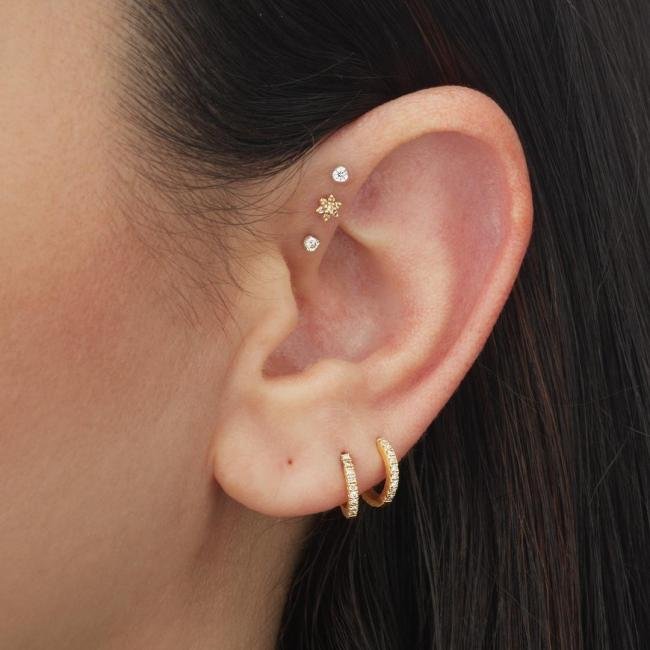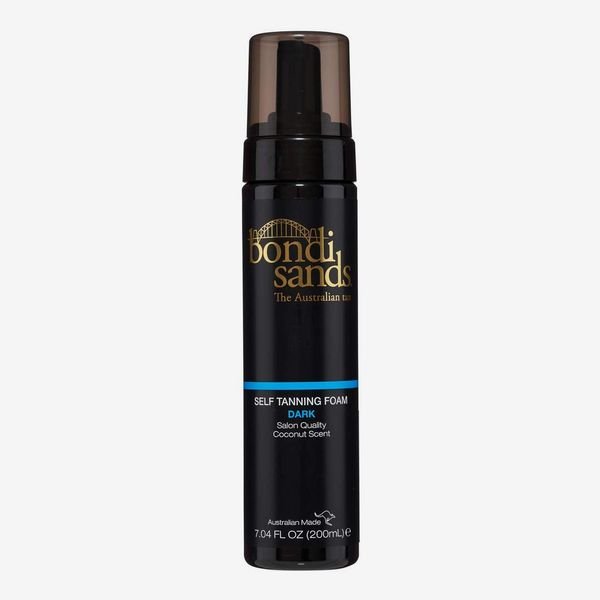What Is Skin Cycling? Plus, How to Incorporate It Into Your Routine

Introduction
Skin cycling has gained significant popularity in the skincare community as a method to optimize the effectiveness of our skincare routine. By altering the products and ingredients we use at specific intervals, we can enhance the overall health and appearance of our skin. In this article, we will delve into the concept of skin cycling, explore its benefits, and learn how to incorporate it into our daily skincare regimen for maximum results.
Understanding Skin Cycling
Skin cycling is a method of altering your skincare routine with different products and ingredients at specific intervals to optimize their efficacy. By alternating between active ingredients and rest periods, skin cycling aims to improve the overall health and appearance of the skin.
One of the key benefits of skin cycling is that it prevents the skin from becoming too accustomed to specific ingredients. When you continuously use the same products, your skin can develop a tolerance, reducing their effectiveness over time. Skin cycling helps to avoid this by introducing new active ingredients periodically, allowing your skin to continuously reap their benefits.
A common four-day skin cycling schedule involves specific focus nights and recovery nights:
- Exfoliation Night: On this night, you focus on exfoliating the skin to promote cell turnover and maintain a smooth complexion. Exfoliation helps to remove dead skin cells, unclog pores, and improve the absorption of other skincare products. You can incorporate physical exfoliants like scrubs or chemical exfoliants like alpha-hydroxy acids (AHAs) or beta-hydroxy acids (BHAs) into your routine.
- Retinoid Night: Retinoids are a powerful ingredient that can help improve various skin concerns, including fine lines, wrinkles, acne, and hyperpigmentation. However, they can also cause dryness and irritation if used too frequently. Therefore, dedicating a specific night to retinoids allows your skin to benefit from their effects without overwhelming it. Start with a low concentration retinoid and gradually increase as your skin builds tolerance.
- Recovery Nights: These are nights where you allow your skin to rest and rejuvenate without any active treatments. It’s essential to give your skin time to recover from exfoliation or retinoid use. During these nights, focus on soothing ingredients and hydrating products that support the skin’s barrier function. Look for products with ingredients like hyaluronic acid, ceramides, aloe vera, or chamomile extract.
- Recovery Nights: The second recovery night is a continuation of the previous night, allowing your skin additional time to rest and recover.
By following this four-day cycling schedule, you can ensure that your skin receives the benefits of active ingredients while also allowing it enough time to recover.
Note: Skin cycling may not be suitable for everyone. It is essential to consider your skin type and tolerance levels when incorporating this regimen into your skincare routine. For oily or combination skin types, skin cycling can help balance oil production and improve overall skin texture. However, if you have sensitive or reactive skin, it’s crucial to approach skin cycling with caution and consult with a dermatologist or skincare professional before starting.
The Key Elements of a Skin Cycling Routine
1. Exfoliation Night
Exfoliation plays a crucial role in promoting cell turnover and maintaining a smooth complexion. By removing dead skin cells, exfoliation can improve the skin’s texture and overall appearance. Different skin types require different exfoliating agents and techniques for optimal results:
- Oily Skin: Oily skin can benefit from oil-soluble salicylic acid, which can penetrate through the oil in the skin and exfoliate within the pore lining. Physical exfoliation with gentle scrubs can also help remove excess oil and debris.
- Dry Skin: Dry skin types may benefit from mild chemical exfoliants like lactic acid or urea, which can effectively remove dead skin cells without causing further dryness or irritation.
- Combination Skin: Combination skin can benefit from a combination of exfoliating methods tailored to different areas of the face. For example, using a gentle physical exfoliant on the oily T-zone and a mild chemical exfoliant on drier areas.
2. Retinoid Night
Retinoids are renowned for their anti-aging effects and their ability to improve skin texture and tone. They work by increasing cellular turnover, stimulating collagen production, and reducing the appearance of fine lines and wrinkles. When incorporating retinoids into your evening skincare routine, it’s essential to start with a low concentration and gradually increase frequency to minimize potential irritation. Additionally, using sunscreen during the day becomes even more crucial when using retinoids due to increased sun sensitivity.
3. Understanding Recovery Nights
Recovery nights are essential for allowing the skin to rest and rejuvenate without any active treatments. During these nights, it’s beneficial to focus on soothing ingredients and hydrating products that support the skin’s barrier function:
- Soothing Ingredients: Look for products containing ingredients such as chamomile, centella asiatica (cica), aloe vera, or colloidal oatmeal to calm any potential irritation or redness.
- Hydrating Products: Opt for hydrating serums or masks with ingredients like hyaluronic acid, glycerin, or ceramides to replenish moisture and strengthen the skin’s natural protective barrier.
By incorporating these key elements into your skin cycling routine, you can optimize the effectiveness of each active ingredient while ensuring that your skin has adequate time to rest and recover between treatments.
Incorporating Skin Cycling Into Your Skincare Routine
When it comes to incorporating skin cycling into your skincare routine, there are a few key factors to consider. By customizing your cycling routine based on your skin type, selecting the right products, and understanding the facts behind the beauty hype, you can optimize the benefits of skin cycling for your specific needs.
Guide to Assessing Your Skin Type for Customized Cycling
To begin incorporating skin cycling into your regimen, it’s important to assess your skin type. This will help you determine which active ingredients and rest periods will work best for your skin. Here’s how to identify common skin types and adapt your cycling routine accordingly:
- Oily Skin: If you have oily skin, you may experience excess sebum production and visible shine throughout the day. Incorporating exfoliation nights with ingredients like salicylic acid can help unclog pores and reduce oiliness. On recovery nights, opt for lightweight, oil-free moisturizers to avoid adding extra oil to your skin.
- Dry Skin: Dry skin tends to lack moisture and can feel tight or flaky. Look for gentle exfoliants that won’t strip away essential oils, such as lactic acid or enzymes. On recovery nights, focus on hydrating ingredients like hyaluronic acid and ceramides to replenish moisture levels in the skin.
- Combination Skin: Combination skin is characterized by having both oily and dry areas on the face. To address both concerns, consider using a combination of exfoliating ingredients like glycolic acid on specific areas prone to congestion, while using a milder exfoliant or hydrating product on drier areas of the face during recovery nights.
- Sensitive Skin: If you have sensitive skin, it’s important to approach skin cycling with caution. Gentle exfoliants like PHA (polyhydroxy acids) or enzymatic exfoliators can be suitable options for sensitive skin. On recovery nights, focus on soothing ingredients like aloe vera or chamomile to calm any potential irritation.
By tailoring your cycling routine to your specific skin type, you can ensure that you’re addressing your skin’s unique needs and concerns.
Factors to Consider When Choosing Products for Skin Cycling
When selecting products for your skin cycling routine, it’s essential to choose high-quality formulations with proven efficacy and safety profiles. Here are a few factors to consider:
- Product Formulation: Look for products that are well-formulated and contain active ingredients at effective concentrations. Check the ingredient list for key actives like alpha hydroxy acids (AHAs) or retinol, as these ingredients play a vital role in skin cycling.
- Skin Concerns: Identify your specific skin concerns, such as acne, hyperpigmentation, or fine lines, and select products that target those issues during the appropriate cycling phases. For example, if you’re dealing with acne breakouts, look for exfoliants with antibacterial properties
Best Practices for a Successful Skin Cycling Journey
When it comes to incorporating skin cycling into your skincare routine, there are a few best practices to keep in mind. These practices will help ensure that you have a successful experience and achieve optimal results. Let’s explore these practices in detail:
Importance of Patch Testing New Products and Gradually Introducing Them During Cycling Phases
Before incorporating any new products into your skin cycling routine, it is crucial to patch test them. Patch testing involves applying a small amount of the product to a discreet area of your skin, such as behind the ear or on the inner forearm. This allows you to assess whether the product causes any adverse reactions or sensitivities before applying it to your entire face.
To properly patch test a new product, follow these steps:
- Cleanse the area: Make sure the patch testing area is clean and free from any other products.
- Apply a small amount: Take a pea-sized amount of the product and gently apply it to the patch testing area.
- Observe for 24-48 hours: Leave the product on for at least 24 hours, but preferably 48 hours. During this time, observe for any signs of irritation, redness, itching, or discomfort.
- Check for reactions: If you experience any negative reactions during the patch testing period, such as significant redness or irritation, discontinue use of the product.
Once you have successfully completed a patch test and determined that a new product is suitable for your skin, it’s important to introduce it gradually into your cycling routine. Start by using the product once or twice a week and gradually increase the frequency as your skin builds tolerance. This gradual introduction allows your skin to adjust to the active ingredients without overwhelming it.
Building Tolerance and Adapting to Active Ingredients Over Time
Skin cycling involves incorporating active ingredients into your routine, such as exfoliants and retinoids. These ingredients can be potent and may cause initial reactions or sensitivities, especially if your skin is not accustomed to them. Therefore, it’s essential to be patient and give your skin time to adapt.
When introducing a new active ingredient, it’s normal to experience mild reactions such as temporary dryness, flakiness, or slight redness. These reactions usually subside as your skin builds tolerance. However, if the reactions persist or worsen over time, it may be an indication that the product is too harsh for your skin. In this case, consider adjusting the frequency or concentration of the active ingredient or consulting with a dermatologist.
Monitoring Progress and Making Adjustments as Needed for Optimal Results
Regularly monitoring your skin’s progress is crucial for a successful skin cycling journey. This involves assessing the effectiveness of the products you’re using and making adjustments as needed.
Keep a close eye on how your skin responds to each cycling phase and specific products within those phases. Take note of any improvements in texture, clarity, or overall appearance. Similarly, be aware of any adverse reactions or lack of desired results.
Based on your observations, you can make necessary adjustments to your cycling schedule or product choices. For example:
- If you notice that certain products are causing excessive dryness or irritation, consider reducing their frequency or switching to gentler formulations.
- If you’re not seeing the desired results from a particular active ingredient, you might want to try a different product with
The Potential Drawbacks of Skin Cycling
While skin cycling has gained popularity in the skincare community, it’s important to note that there is a lack of scientific evidence supporting its effectiveness. The concept of alternating between active ingredients and rest periods sounds promising, but it is still considered more of a personal experiment rather than a proven skincare method. Here are some potential drawbacks to keep in mind when considering skin cycling:
- Lack of Scientific Evidence: One of the main concerns with skin cycling is the limited scientific research backing its claims. While anecdotal evidence and personal experiences can be valuable, it’s essential to approach skin cycling with a critical mindset. Without robust scientific studies, it’s challenging to determine the long-term effects and benefits of this routine.
- Risk of Over-Exfoliation: Excessive exfoliation can damage the skin barrier and lead to irritation, sensitivity, and even inflammation. Skin cycling often involves using different exfoliating products during the cycle, which increases the risk of over-exfoliation if not done correctly.
- Excessive Product Rotation: Skin cycling typically involves rotating between different active ingredients and products within a short period. While variety can be beneficial for addressing various skin concerns, excessive product rotation can overwhelm the skin and disrupt its natural balance.
- Potential for Skin Sensitivity: Skin cycling may not be suitable for those with more sensitive skin types. Constantly introducing new products and ingredients can increase the risk of irritation, redness, and allergic reactions in individuals with sensitive skin.
- Time and Patience Required: Skin cycling is not a quick fix solution. It requires time, patience, and consistency to see results. Some individuals may become frustrated if they don’t notice immediate improvement or experience initial skin reactions during the adjustment period.
Pro Tip: When incorporating exfoliation into your skin cycling routine, start with gentle exfoliants and gradually increase their strength or frequency as your skin adjusts. Listen to your skin’s signals and adjust accordingly.
Pro Tip: Instead of constantly switching products, consider focusing on establishing a consistent routine that includes key ingredients suitable for your skin type. This allows your skin to acclimate to the ingredients and reap their benefits over time.
Pro Tip: If you have sensitive skin, consider consulting with a dermatologist before incorporating skin cycling into your routine. They can provide personalized recommendations and help determine if this method is suitable for your specific skin needs.
Pro Tip: Be patient and allow your skin time to adapt to the changes in your routine. Remember that skincare is a journey, and results may take time to manifest. If you experience any concerning reactions, consult with a skincare professional for guidance.
While there are potential drawbacks to consider, it’s worth noting that many individuals have found success with skin cycling. However, it’s essential to approach this routine cautiously and tailor it to your own skin’s needs and tolerance levels. Regularly assess your progress, make adjustments as needed, and consult with a dermatologist or skincare professional if you have any underlying skin conditions or are using prescription medications.
Conclusion
In summary, skin cycling is a method of altering your skincare routine with different products and ingredients at specific intervals to optimize their efficacy. By alternating between active ingredients and rest periods, you can promote cell turnover, maintain a smooth complexion, and support your skin’s overall health and appearance.
However, it’s important to approach skin cycling as a personal experiment, guided by your own skin’s needs and tolerance levels, rather than a strict rule to follow. While many individuals have reported positive results from incorporating skin cycling into their skincare regimen, it’s essential to consider the potential drawbacks and consult with a dermatologist or skincare professional before embarking on this journey.
Here are some key takeaways to conclude our discussion on skin cycling:
- Personal Experiment: Skin cycling is not a one-size-fits-all approach. Every individual has unique skin characteristics and concerns. Therefore, it is crucial to experiment with different products and routines to find what works best for you.
- Consultation: Before starting a skin cycling routine, especially if you have underlying skin conditions or are using prescription medications, it’s recommended to seek guidance from a dermatologist or skincare professional. They can provide personalized advice based on your specific needs.
Remember that patience is key when it comes to seeing results from skin cycling. It may take time for your skin to adjust to new products and routines. Additionally, monitoring your progress and making adjustments as needed is essential for optimal results.
In conclusion, while there may be limited scientific evidence supporting the effectiveness of skin cycling, many individuals find it beneficial in achieving their skincare goals. By following the principles of alternating active ingredients and providing recovery periods for your skin, you can potentially enhance the efficacy of your skincare routine.
So why not give skin cycling a try? Start by assessing your skin type and selecting high-quality products with proven efficacy and safety profiles. Gradually introduce new products during cycling phases while patch testing to avoid potential irritation or allergic reactions. Regularly evaluate your skin’s progress and make adjustments as needed.
Remember, skincare is a journey, and what works for one person may not work for another. Embrace the process of discovering what works best for your skin and enjoy the benefits that skin cycling can bring to your skincare routine.










